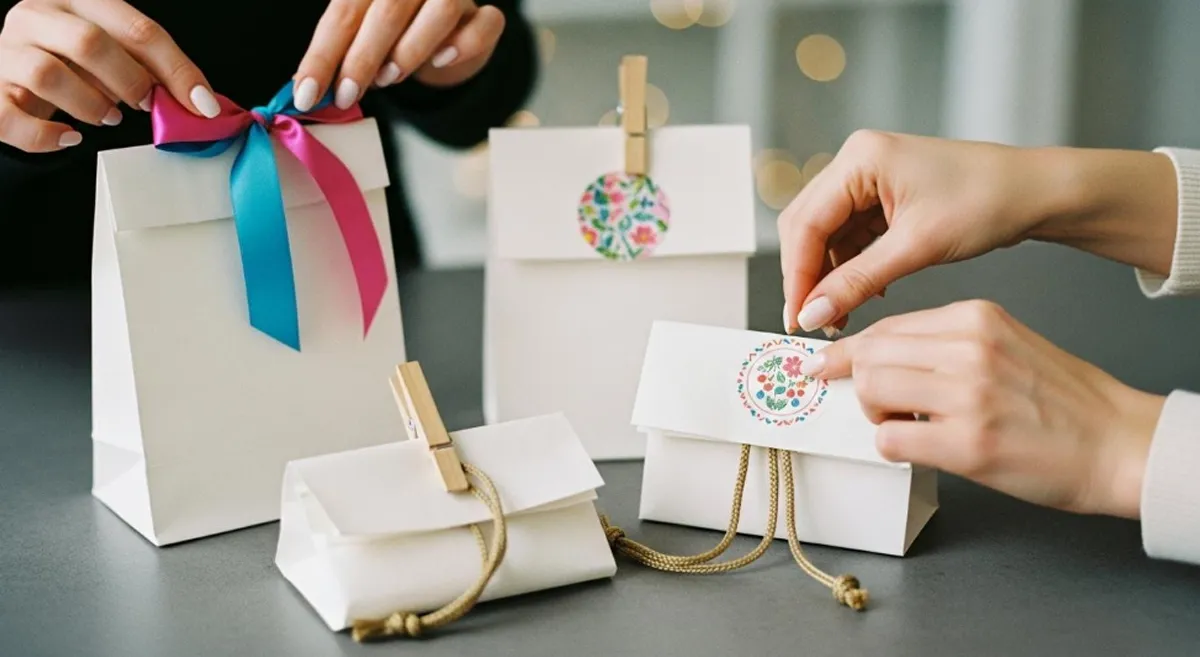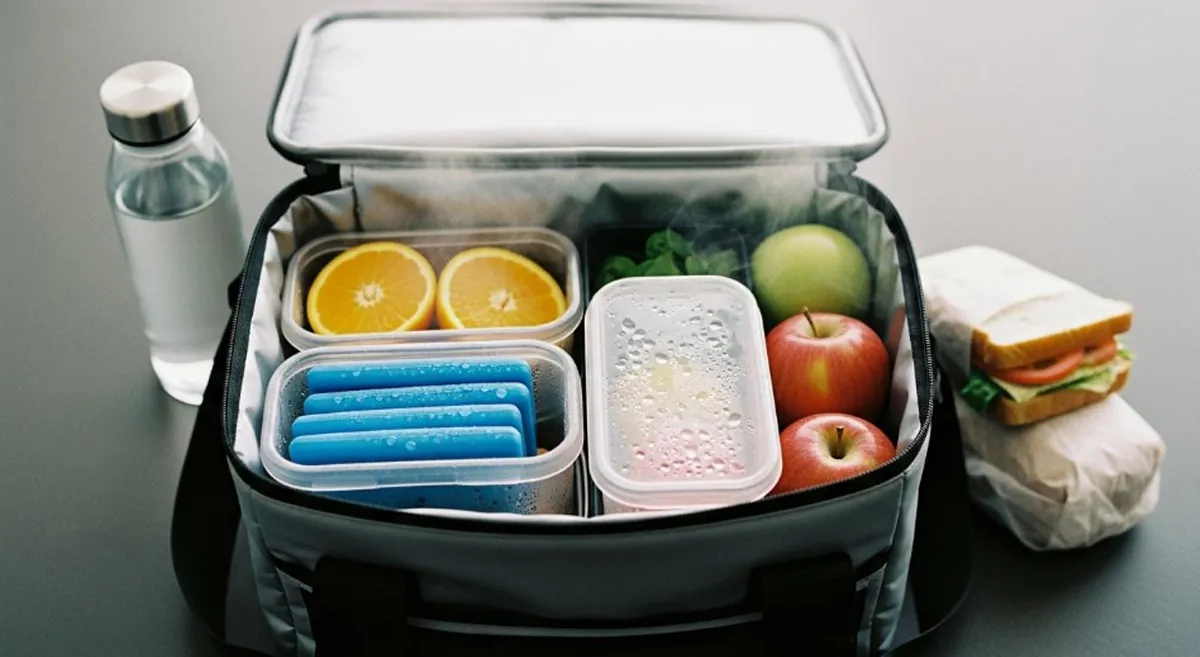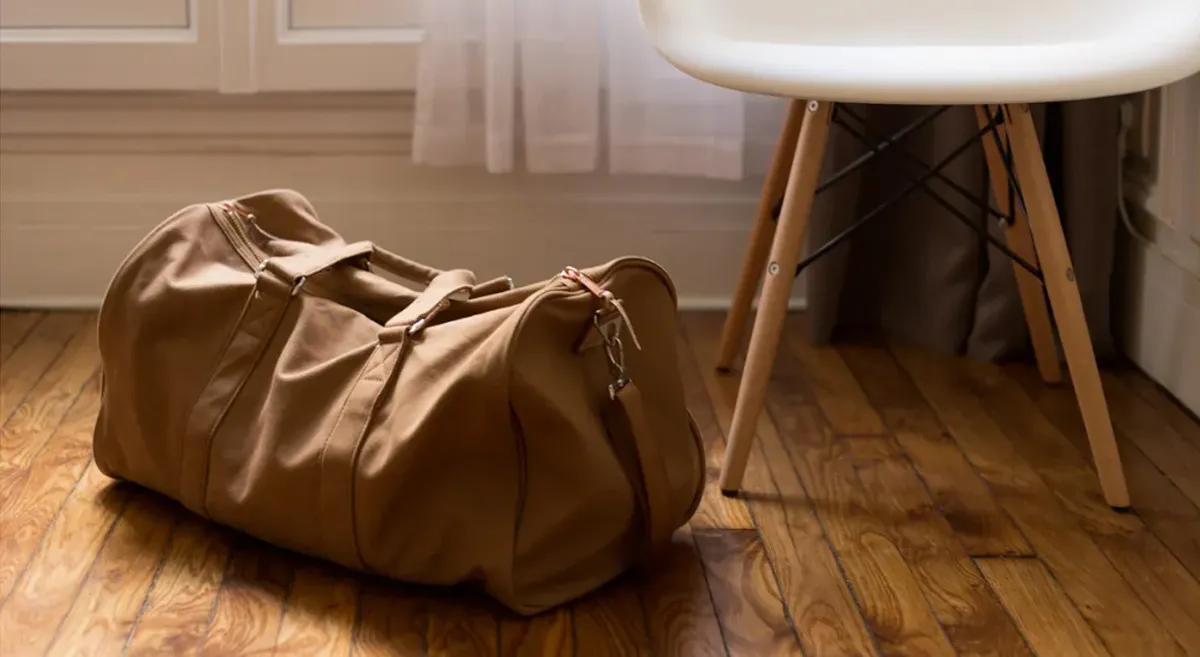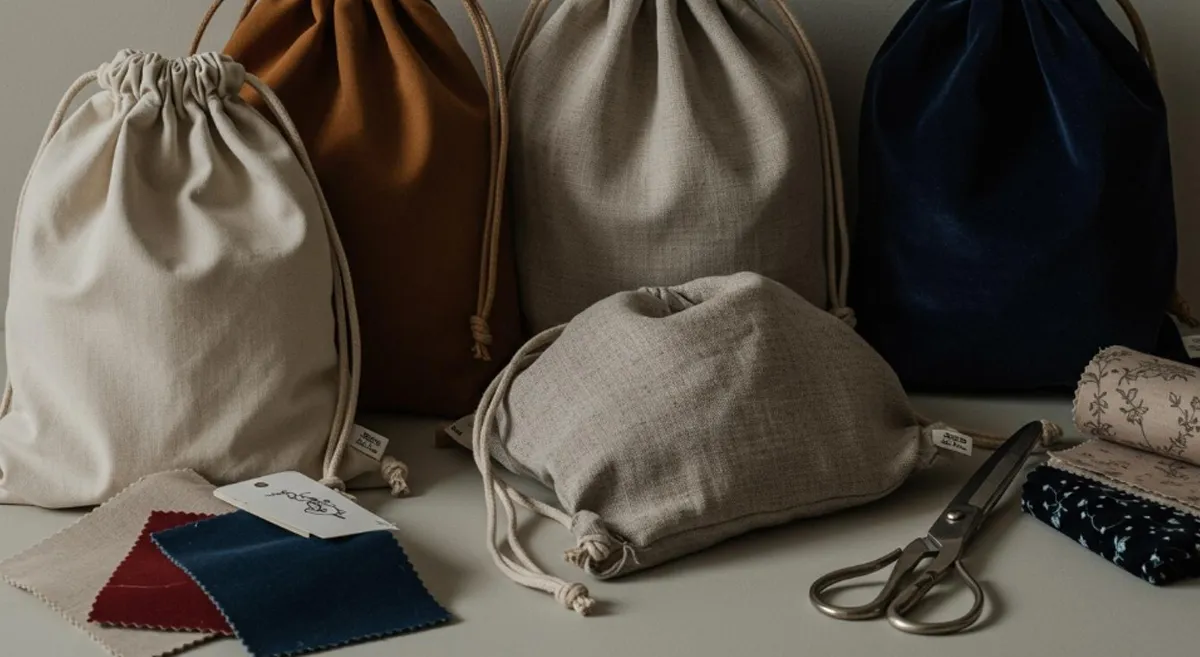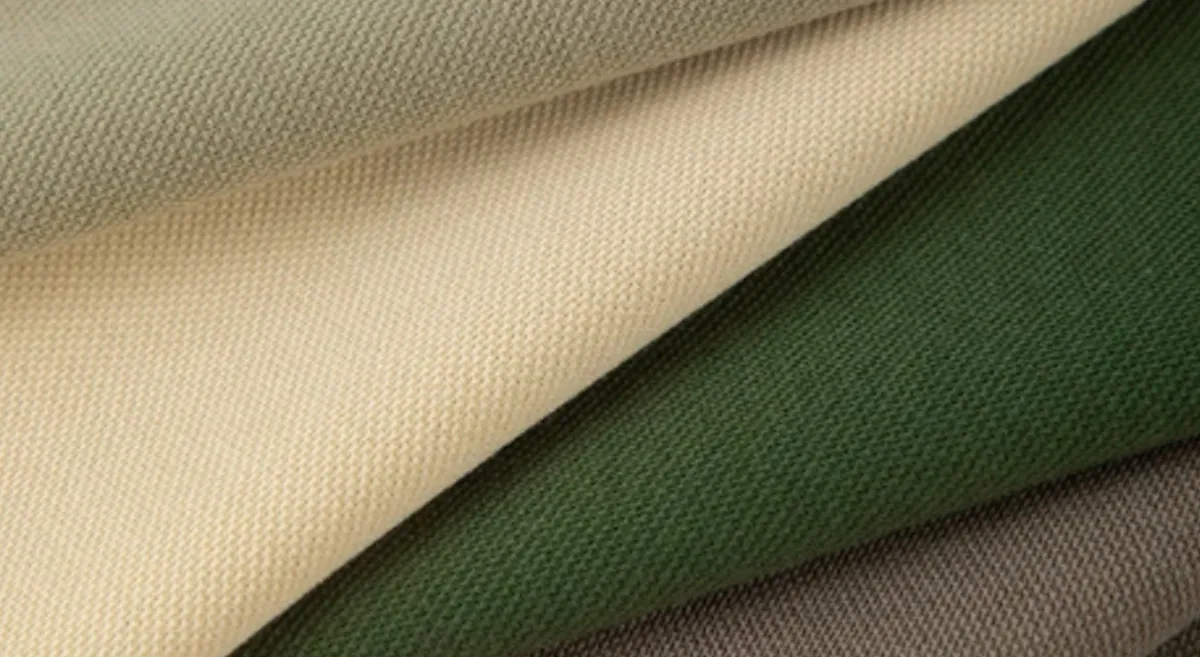
If you have ever wondered what is cotton twill, you are not alone. Cotton twill is a strong fabric known for its unique diagonal weave, which sets it apart from other materials. Many bag makers prefer cotton twill because it keeps its shape, feels soft, and hides stains well. Here’s why cotton twill is a top choice for bag makers:
| Reason | Why It Matters for Bags |
|---|---|
| Durability | Stays strong and bends easily, making it great for daily use |
| Comfort | Soft and breathable, so bags are comfortable to carry |
| Aesthetic Appeal | Has a smooth, neat look, ideal for stylish and trendy bags |
| Eco-Friendliness | Made from natural cotton, supporting eco-friendly choices |
When you choose a bag made from cotton twill, you get a product that lasts, looks great, and is easy to care for. So, if you’re asking what is cotton twill, it’s the fabric that brings durability, comfort, and style together.
Key Takeaways
- Cotton twill is a strong fabric. It has a special diagonal weave. This makes it great for bags used every day.
- Cotton twill is soft and lets air pass through. This makes bags comfy to carry. It helps people enjoy using them.
- Twill fabric looks nice and smooth. It has a neat style. Many people pick it for cool and trendy bags.
- The diagonal pattern in twill hides stains and dirt. This keeps bags looking clean and new for longer.
- Twill is strong and can bend without breaking. Bags keep their shape, even with heavy things inside.
- Cotton twill is simple to take care of. Most bags can go in the washing machine. This makes cleaning easy and quick.
- Picking organic cotton twill helps the environment. It uses fewer chemicals and supports green choices.
- Twill fabric lasts a long time and is easy to care for. It does not cost much to keep up. This makes it a smart buy.
What Is Cotton Twill
Twill Weave
If you want to know what is cotton twill, you first need to understand the twill weave. This weave is a special way of making fabric. You get twill fabric by weaving threads in a pattern that creates diagonal lines. Each weft yarn goes over and under several warp yarns, but not in a simple over-under way like plain weave. Instead, the yarns shift with each row, which forms a slanted line across the fabric. Most twill weaves have an angle of about 45 degrees. This unique structure gives twill fabric its famous look and feel.
Let’s see how twill weave compares to other types:
| Weave Type | Interlacing Points | Pattern | Characteristics |
|---|---|---|---|
| Twill | Fewer than plain | Diagonal | Softer feel, high density |
| Satin | Long floats, minimal | Smooth | Shiny surface, fragile under abrasion |
| Plain | More interlacing | Simple | Sturdy, less soft than twill and satin |
Twill weave stands out because it makes the fabric softer and denser. You will notice that twill fabric feels thicker and more flexible than plain weave fabric. This is why many people choose twill for bags.
Diagonal Pattern
The diagonal pattern is what makes twill fabric easy to spot. When you look closely, you will see diagonal lines or ribs running across the surface. These lines can slant left or right, giving the fabric a unique texture. Unlike the flat grid you see in plain weaves or the smooth look of satin, twill weaves always show off these diagonal lines.
- The fabric features diagonal lines or ribs that run across its surface.
- These diagonal lines can slant to the left or right, creating a unique visual texture.
- This pattern is distinct from the flat grid of plain weaves and the smooth surface of satin weaves.
- The twill weave has a textured appearance due to the staggered interlacing of warp and weft yarns.
- This creates a dynamic visual appeal that sets it apart from other weaves.
- The twill weave is identified by a distinct pattern of diagonal lines or ribs, known as wales.
- This pattern is a definitive visual identifier of twill, contrasting with the checkerboard pattern of plain weaves.
- Twill weaves showcase diagonal lines or ribs, which are a defining feature of this fabric type.
- Unlike plain weaves that create a uniform grid, twill weaves add depth and texture, making them visually appealing.
You might notice that the diagonal lines not only look good but also help hide stains and dirt. This makes twill fabric a smart choice for bags that you use every day.
Twill in Bag Manufacturing
You might wonder why so many bag makers use twill fabric. The answer is simple: twill is strong, durable, and looks great. The diagonal pattern does more than just look cool. It makes the fabric tougher and helps it last longer. The way the threads lock together in a twill weave means the fabric can handle more weight and stress.
Here’s a quick look at why twill fabric is perfect for bags:
| Property | Description |
|---|---|
| Strength | Twill fabrics are known for their strength due to closely packed threads. |
| Durability | The interlocking structure enhances durability, making it suitable for bags. |
| Resistance to Stains | The irregular surface texture helps in resisting soiling and hiding dirt. |
You get more than just strength with twill. The fabric also resists stains and keeps its shape. This means your bag will look good and last longer, even if you use it every day.
Bag makers love twill fabric because it offers:
- A tighter weave, which boosts durability.
- A diagonal rib pattern that adds strength and makes the fabric less likely to tear.
- Better drape, so bags keep their shape and look stylish.
If you are searching for what is cotton twill, remember that it is a fabric with a special twill weave. This weave creates diagonal lines, making the fabric strong, flexible, and perfect for bags. Twill weaves give you a bag that stands up to daily use and still looks great.
How Twill Fabric Is Made
Weaving Process
You might wonder how cotton twill gets its strong and unique look. The secret is in the weaving process. When you make twill fabric, you use a special method that creates diagonal lines. Here’s how it works:
- The drawing-in draft shows how yarns go through the harnesses.
- The chain plan tells which harnesses to lift for each pick.
- You pass the weft thread over one or more warp threads, then under two or more warp threads.
- This pattern repeats, making the diagonal ribs you see in twill.
This weaving technique gives twill fabric its famous diagonal pattern. The way the threads cross each other makes the fabric tough and flexible. You get a material that resists wrinkles and soil, so your bag stays looking fresh. Twill fabric also has a higher tensile strength than other weaves, like satin. That means your cotton twill bag can handle more weight and stress without tearing.
Tip: The diagonal rib design not only looks cool but also helps your bag last longer.
Types of Cotton Used
Not all cotton is the same when it comes to making twill bags. You have a few choices, and each type brings something special to the table. Here are the most common types:
- Canvas: This heavyweight cotton is super durable. You often see it in tote bags and backpacks.
- Twill: Lighter than canvas but still strong. It’s great for casual bags that need to be sturdy but not too heavy.
- Denim: Rugged and long-lasting. If you want a trendy style, denim is a top pick for bags.
- Muslin: Soft and flexible. It works well for bags that need to be lightweight and easy to fold.
When you pick the right cotton type, you get a bag that matches your needs—whether you want something tough for school or soft for shopping.
Environmental Aspects
You care about the planet, and so do many bag makers. Making cotton twill can affect the environment, but there are ways to make it better. Here’s a look at some key points:
| Aspect | Impact |
|---|---|
| Pesticide Use | Can harm soil and water, affecting plants and animals. |
| Fertilizer Overuse | May cause algae blooms in rivers and lakes, hurting fish and other wildlife. |
| Water Intensity | Uses a lot of water, which can be tough in dry areas. |
| Organic Cotton Benefits | Uses fewer chemicals, keeps soil healthy, and often needs less water. |
| Energy Consumption | Factories use lots of energy, which adds to greenhouse gases. |
| Sustainable Practices | Some manufacturers use energy-saving machines and renewable energy sources. |
If you want an eco-friendly bag, look for organic cotton twill. It’s better for the earth and still gives you a strong, stylish bag. Many companies now invest in cleaner production methods, so you can feel good about your choice.
Characteristics of Twill Fabric
Durability and Strength
When you pick a bag, you want it to last. That’s where twill fabric shines. Twill stands out because it can handle daily wear and tear. The diagonal weave makes the threads lock together tightly. This gives the fabric extra strength and helps it resist stretching or tearing. You can toss your bag around, and it will still look good.
Take a look at how twill compares to other common bag materials:
| Fabric Type | Abrasion Cycles | Notes |
|---|---|---|
| Heavyweight Denim | Over 8,000 | Superior abrasion resistance |
| Cotton Broadcloth | ~2,500 | Shows wear after about 2,500 cycles |
| Nylon | ~4,500 | Good durability |
| Polyester | ~3,500 | Good durability |
| Linen | ~5,500 | Good durability |
| Fine Wool | Significant pilling after 500 cycles | Poor abrasion resistance |
| Canvas, Leather | Rated highly for rub resistance | Good durability |
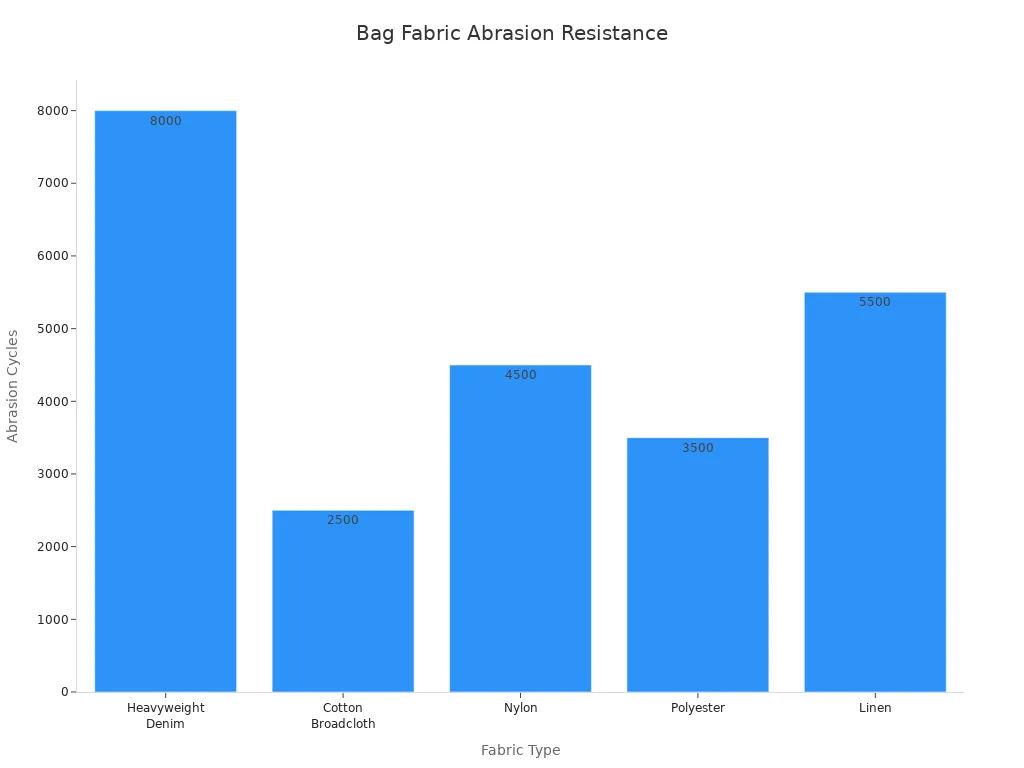
You can see that twill fabric, especially heavyweight denim, offers top-notch abrasion resistance. This means your twill bag can survive thousands of rubs and scrapes. You don’t have to worry about it wearing out quickly.
Texture and Opacity
Twill fabric feels smooth but has a little texture from the diagonal ribs. When you run your hand over the surface, you notice the soft, sturdy feel. The weave gives the fabric a thickness that helps bags keep their shape. You won’t find your bag sagging or looking flimsy.
The thread count and weight also matter. Most twill fabric used for bags falls in this range:
| GSM Range | Thread Count Range | Typical Applications |
|---|---|---|
| 180–250 GSM | 200–350 TC | Workwear, Uniforms, Jackets |
This weight gives your bag a solid structure. The higher thread count means the fabric is dense and less likely to let light through. Twill has greater opacity than other weaves. You don’t have to worry about the contents of your bag showing through. The thickness also helps protect your belongings.
Tip: Twill’s texture and opacity make it a favorite for stylish bags that need to look neat and last long.
Stain Resistance
If you use your bag every day, stains are a real concern. Twill fabric helps you out here. The diagonal pattern does more than look cool—it hides stains and spots better than other cotton weaves. Dirt and marks blend into the ribs, so your bag stays looking fresh.
The weave is very effective at concealing spots and stains. You’ll notice that twill bags don’t show wear as quickly. The greater opacity also helps hide stains, making upkeep easier. You can wipe off most marks, and the fabric won’t show every little spill.
- Twill’s diagonal ribs mask stains and dirt.
- The weave keeps your bag looking clean longer.
- You spend less time worrying about cleaning and more time using your bag.
If you want a bag that stands up to daily life and still looks sharp, twill fabric is a smart choice. The characteristics of twill fabric—strength, texture, and stain resistance—make it perfect for anyone who needs a reliable, stylish bag.
Drape and Weight
When you pick up a cotton twill bag, you notice something special right away. The fabric feels sturdy, but it also moves with you. This is what people mean when they talk about “drape.” Drape describes how a fabric hangs or folds. Cotton twill has a nice balance. It holds its shape, but it does not feel stiff or rigid.
You might wonder why drape matters for bags. The answer is simple. A bag with good drape looks neat and keeps its form, even when you fill it with your things. At the same time, it bends and flexes, so you can carry it comfortably. You do not want a bag that feels like cardboard. You also do not want one that sags and loses its shape. Cotton twill gives you the best of both worlds.
Let’s break down what makes cotton twill’s drape and weight so useful for bag design:
- Cotton twill has a structured yet drapable nature. This means your bag feels strong but still flexible.
- Lightweight cotton twill is easy to sew. You can toss it in the washing machine with your regular laundry. That makes it a practical choice for everyday bags.
- The fabric’s floppiness is a bonus for large totes. You can fold them up and store them without any trouble.
Tip: If you want a bag that folds flat for travel or storage, look for one made from lightweight cotton twill. It will spring back into shape when you need it.
The weight of cotton twill can vary. Some twill fabrics feel light and soft. Others feel thick and heavy. For bags, most makers choose a medium or heavy weight. This gives the bag enough structure to stand up on its own. It also helps protect your belongings inside.
You might see weight listed as GSM (grams per square meter). A higher GSM means a thicker, heavier fabric. For most bags, a GSM between 180 and 250 works well. This range gives you a bag that is tough but not bulky.
Here’s a quick look at how drape and weight affect different types of bags:
| Bag Type | Drape Needed | Typical Weight (GSM) | Why It Works |
|---|---|---|---|
| Tote Bags | Flexible, foldable | 180–220 | Easy to store, holds shape when used |
| Backpacks | Structured | 220–250 | Supports weight, keeps form |
| Messenger Bags | Medium drape | 200–240 | Comfortable to carry, looks neat |
You get to enjoy a bag that feels good, looks sharp, and stands up to daily use. Cotton twill’s drape and weight make it a favorite for anyone who wants a bag that is both practical and stylish.
Twill Fabric Benefits for Bags
Shape Retention
You want your bag to look good, even after you use it every day. Twill fabric helps your bag keep its shape, so it never looks saggy or worn out. The way twill is woven makes the material strong and able to handle stress. When you fill your bag with books, groceries, or gym gear, the fabric stands up to the challenge. It does not stretch out or lose its form.
Here are some reasons why twill fabric is great for shape retention:
- Twill fabric is durable, so your bag can handle regular wear and tear.
- The weaving technique creates a strong material that keeps its shape, even when you pack your bag full.
- Cotton canvas, a type of twill, has minimal stretch under load, so your bag stays looking sharp.
- The even distribution of force across the fabric reduces the chance of tears, making your bag last longer.
You get a bag that looks new, even after months of use. That’s one of the biggest benefits of twill fabric for anyone who wants a reliable bag.
Versatility
Twill fabric stands out because you can use it for almost any type of bag. You might want a tote for shopping, a backpack for school, or a messenger bag for work. Twill works for all of these. The fabric feels soft and comfortable, but it is also tough enough to handle daily use. You get breathability, so your bag never feels stuffy. This mix of softness, durability, and breathability means you can use twill for bags, pouches, and even accessories like wallets or hats.
The versatility of twill means you can find it in many styles and colors. You can pick a classic look or go for something bold. No matter what you choose, twill fabric gives you a bag that fits your needs and your style.
Easy Care
You do not want to spend hours cleaning your bag. Twill fabric makes life easier because it is simple to care for. You can wash most twill bags in the machine, and they come out looking fresh. The fabric can handle frequent washing and even high temperatures without getting damaged. That means you do not have to worry about shrinking or fading.
Here’s why twill fabric is easy to care for:
- You can wash it often, and it still looks good.
- The fabric is strong, so it does not wear out quickly.
- Twill comes from natural cotton, which appeals to people who want a sustainable choice.
If you want a bag that is easy to clean and lasts a long time, twill fabric is a smart pick. You get all the benefits of twill fabric—shape retention, versatility, and easy care—in one package.
Cost-Effectiveness
When you shop for a bag, you want something that looks good and lasts a long time. You also want to get the most for your money. Cotton twill bags give you all of that. They are one of the most cost-effective choices you can make, whether you buy one bag or order in bulk for your business.
Why does cotton twill save you money? The answer is simple. This fabric is tough. It stands up to daily use, so you do not have to replace your bag often. You spend less over time because your bag keeps going strong, even after months or years of use.
Let’s look at how cotton twill compares to other common bag fabrics:
| Fabric Type | Average Price | Lifespan | Replacement Rate | Value for Money |
|---|---|---|---|---|
| Cotton Twill | $$ | 2–5 years | Low | ⭐⭐⭐⭐⭐ |
| Nylon | $$$ | 1–3 years | Medium | ⭐⭐⭐ |
| Polyester | $$ | 1–2 years | High | ⭐⭐ |
| Leather | $$$$ | 5+ years | Very Low | ⭐⭐⭐⭐ |
You can see that cotton twill gives you a great balance. It costs less than leather but lasts much longer than polyester. You get a bag that holds up well, so you do not have to keep buying new ones.
Here are some reasons why cotton twill bags are a smart buy:
- Durability: You get a bag that resists tears and stains. This means fewer repairs and replacements.
- Low Maintenance: You can wash your bag at home. No need for dry cleaning or special care.
- Bulk Savings: If you order for a business or event, you get even better prices. Many manufacturers offer discounts for large orders.
- Custom Options: You can add logos or designs without spending a lot. Cotton twill takes printing and embroidery well.
Tip: If you want to save money in the long run, choose a cotton twill bag. You will spend less on repairs and replacements.
You also help the environment when you buy fewer bags. Less waste goes to landfills, and you use fewer resources. Cotton twill bags are reusable and recyclable, so you make a smart choice for your wallet and the planet.
When you add it all up, cotton twill bags give you the best value. You get a strong, stylish bag that lasts, saves you money, and helps the earth. That is what cost-effectiveness is all about!
Uses of Cotton Twill
You see twill fabric everywhere, even if you don’t realize it. This fabric pops up in bags, clothes, and even home items. Let’s look at some of the most popular uses of twill and why you might want to choose it for your next bag or project.
Bags and Backpacks
Twill fabric shines when you need something strong and stylish. You find it in many types of bags and backpacks. The fabric holds up well, keeps its shape, and looks great.
Tote Bags
Tote bags made from twill are perfect for shopping, school, or a day out. You get a bag that feels soft but stands up to heavy books or groceries. The diagonal weave helps the bag keep its shape, even after lots of use.
Messenger Bags
If you carry a laptop or books, you want a bag that won’t sag. Messenger bags made with twill fabric offer just that. The fabric’s strength means your bag can handle daily trips to work or school. You also get a classic look that fits any style.
Travel Bags
Travel bags need to be tough. Twill fabric makes sure your bag survives airports, road trips, and busy days. The fabric resists stains and keeps your things safe. You can pack a lot, and the bag still looks neat.
Apparel and Accessories
Twill isn’t just for bags. You see it in clothes and accessories too. The fabric’s durability and smooth finish make it a favorite for many items.
| Category | Description |
|---|---|
| Garment Manufacturing | Great for trousers, jackets, and uniforms because it lasts and looks sharp. |
| Casual Wear & Accessories | Used for denim, casual clothes, and accessories thanks to its smooth feel. |
| Apparel | Common in jeans, chinos, and suits for strength and style. |
| Accessories | Perfect for hats, belts, aprons, and more because it holds its shape well. |
You might wear twill every day without thinking about it. Jeans, jackets, and hats often use this fabric. The uses of twill fabric in clothing show how versatile and reliable it is.
Other Applications
Twill fabric does more than make bags and clothes. You find it in many places around your home and in uniforms.
- Hotels use twill for housekeeping uniforms because it washes well and keeps its color.
- Restaurants and food workers like twill for aprons and uniforms. The fabric feels comfortable and stays clean.
- You see twill in curtains, tablecloths, and napkins. The fabric adds a touch of style and feels smooth to the touch.
- Furniture makers use twill for upholstery. The fabric gives chairs and sofas a cozy, stylish look.
- Schools pick twill for uniforms. The fabric stands up to lots of washing and rough play.
- Hospitals use twill for uniforms because it breathes well and feels soft.
You can see that the uses of twill fabric go far beyond bags. This fabric works hard in many places, making life easier and more comfortable for you.
Tip: If you want something that lasts and looks good, twill fabric is a smart choice for almost any project.
Caring for Twill Bags
Cleaning Tips
Keeping your cotton twill bag clean is simple. You do not need fancy products or special tools. Just follow these steps to keep your bag looking fresh and lasting longer:
- Zip It Up: Always close all zippers before washing. This helps prevent snags or damage to both the fabric and the zipper.
- Gentle Wash: Place your bag in the washing machine. Use cold water and set it to a gentle cycle. Pick a mild detergent to protect the fabric’s strength and color.
- Air Dry: After washing, skip the dryer. Instead, line dry your bag or lay it flat. This keeps the shape and stops shrinkage.
- Spot Cleaning: For small messes, grab a soft, damp cloth and a little gentle detergent. Dab the spot instead of rubbing hard. Rinse the area well to remove any soap left behind.
- Shape While Drying: When drying, reshape your bag with your hands. This helps it keep its form and look neat.
Tip: Always check the care label inside your bag for any special instructions. Some bags may have extra details for cleaning.
Stain Removal
Stains happen, but you can handle them quickly with a few easy tricks. Cotton twill hides stains well, but it’s best to treat them right away. Here’s what you can do:
- Blot the stain with a clean, dry cloth. This soaks up the mess without pushing it deeper into the fabric.
- Flush the stained area with cold water. This helps stop the stain from setting.
- Mix a little water and gentle detergent. Use this solution to gently scrub the stain with a soft brush or cloth.
- Rinse the spot with cool water until all the soap is gone.
- For mold or mildew, mix water and white vinegar. Dab the area, then rinse and let it dry in fresh air.
Note: Never use hot water on stains. Hot water can set the stain and make it harder to remove.
Storage
Storing your cotton twill bag the right way keeps it looking new and ready to use. Here’s how you can protect your bag when you’re not using it:
- Clean First: Brush off any dirt and spot clean with mild soap and water. Let your bag air dry away from direct sunlight.
- Keep Its Shape: Stuff your bag with acid-free tissue paper or a clean cotton cloth. This helps the bag hold its shape. Avoid using newspaper because the ink can transfer.
- Choose Breathable Covers: Place your bag in a fabric dust bag or a cotton pillowcase. Avoid plastic bags, which can trap moisture and cause mildew.
- Pick the Right Spot: Store your bag in a cool, dry place. Stay away from damp basements or hot attics unless they are climate-controlled.
- Lay Flat or Upright: Do not hang your bag for long periods. Instead, lay it flat or stand it upright on a shelf. This prevents the straps from stretching or getting damaged.
Tip: Regularly check on your stored bags. Give them a little air and reshape them if needed to keep them looking their best.
Extending Lifespan
You want your cotton twill bag to last as long as possible. Good news—taking care of it is easy! With a few simple habits, you can keep your bag looking fresh and strong for years.
Here are some smart ways to extend the lifespan of your cotton twill bag:
- Clean regularly: Dirt and dust can wear down the fabric over time. Give your bag a gentle shake or brush after each use. If you spot any dirt, wipe it away with a damp cloth. Regular cleaning keeps the fibers strong and the colors bright.
- Handle stains promptly: Spills happen. When you see a stain, treat it right away. Blot the spot with a clean cloth and use a gentle detergent. Quick action stops stains from setting and keeps your bag looking new.
- Use gentle detergents: Harsh chemicals can weaken cotton fibers. Pick a mild, gentle detergent when you wash your bag. This helps the fabric stay soft and strong.
- Wash in cold water: Hot water can shrink cotton and fade colors. Cold water is best for washing twill. It protects the weave and keeps your bag in shape.
- Air dry: Skip the dryer. High heat can damage the fabric and cause shrinkage. Instead, lay your bag flat or hang it up to air dry. This helps the bag keep its shape and prevents wrinkles.
- Avoid overloading: It’s tempting to stuff your bag full, but too much weight can stretch the fabric and strain the seams. Carry only what you need. Your bag will thank you by lasting longer.
Tip: Rotate your bags if you have more than one. Giving each bag a break helps them all last longer.
You can also store your bag the right way to help it last. Keep it in a cool, dry place. Stuff it with tissue paper to hold its shape. Use a cotton dust bag or pillowcase for storage. Avoid plastic bags, which can trap moisture and cause mildew.
Here’s a quick table to help you remember the best care tips:
| Care Step | Why It Matters |
|---|---|
| Clean regularly | Stops dirt from wearing down fabric |
| Treat stains fast | Prevents permanent marks |
| Use gentle detergent | Keeps fibers strong |
| Cold water wash | Protects color and shape |
| Air dry | Prevents shrinkage and damage |
| Don’t overload | Reduces stress on seams and fabric |
By following these easy steps, you make sure your cotton twill bag stays tough, clean, and stylish. A little care goes a long way—your bag will be ready for every adventure!
Why Choose Cotton Twill
Comparison with Other Fabrics
When you pick a bag, you want something that lasts and looks good. Twill stands out from other materials because it gives you both. Here’s how twill fabric compares to canvas, polyester, and nylon:
- Twill fabric has a soft, matte finish. It feels classic and never goes out of style. Nylon, on the other hand, looks slick and modern.
- Nylon is the strongest when it comes to pulling and stretching. It works best for heavy-duty backpacks. Twill fabric is tough, but not as strong as nylon. Still, it holds up well for everyday bags.
- Cotton canvas is sturdy but can wear down faster than twill, especially if you use your bag a lot.
- Polyester and nylon resist water better than twill. If you get caught in the rain, nylon keeps your things dry. Twill fabric absorbs some water, so it can get heavy when wet.
- Twill hides stains and dirt better than most other fabrics. The diagonal weave helps keep your bag looking clean.
You get a bag that feels soft, looks great, and stands up to daily use. Twill gives you a classic look that fits almost any style.
Customization Options
You want your bag to match your style or show off your brand. Twill fabric makes this easy. You can choose from many colors, sizes, and finishes. Here’s a quick look at what you can do:
| Customization Aspect | Details |
|---|---|
| Color Choices | Swatch packs and color charts available for as little as $0.95 |
| Printing Methods | Custom logo printing, various printing techniques available |
| Finishing Options | Folded hem, overlock hem, cut on the line, pinked edge, options for black or white thread |
You can pick from seven different colors and four sizes, or even ask for a custom size. Want your logo on your bag? No problem. Twill fabric takes printing well, so your design comes out clear and bright. You can also choose how the edges look, like folded or overlocked hems. This means your bag can be as simple or as fancy as you want.
- Logo printing is easy on twill.
- You can pick the color that fits your brand or mood.
- Sizes are flexible, so you get the bag that works for you.
Twill gives you the freedom to create a bag that feels personal and unique.
Branding for Bags
If you run a business or want to promote your group, twill fabric is a smart choice for branding. This fabric is strong and lasts a long time, so your logo stays looking sharp. Twill is also breathable, which keeps your bag fresh and comfortable to carry.
You can use screen printing or embroidery on twill. Both methods look great and hold up well over time. Twill fabric comes in different weights and colors, so you can match your brand’s style. Plus, it’s made from natural cotton, which is better for the environment.
- Twill fabric is perfect for adding your logo.
- The material is durable, so your brand gets seen for years.
- You can choose from many colors and weights to fit your needs.
- Twill is eco-friendly, which makes your brand look good and responsible.
Tip: If you want a bag that shows off your brand and lasts, twill fabric is the way to go.
Conclusion
Cotton twill gives you a bag that lasts, looks sharp, and stays easy to clean. You get strong fabric with reinforced stitching, so your tote carries heavy items without worry. The diagonal weave hides stains and keeps your bag looking fresh. You help the planet by choosing reusable cotton twill bags. You can customize your order with logos or designs, making it perfect for your brand. Bulk orders save you money. If you want custom or wholesale bags, reach out to our team. We’re ready to help you create the perfect cotton twill bag.
FAQ
What makes cotton twill different from regular cotton?
Cotton twill has a diagonal weave. This weave gives the fabric more strength and a unique look. Regular cotton uses a plain weave, which feels lighter and less sturdy.
Can you wash cotton twill bags in a washing machine?
Yes, you can! Use cold water and a gentle cycle. Always air dry your bag to keep its shape. Check the care label for special instructions.
Does cotton twill shrink after washing?
Cotton twill may shrink a little after the first wash. To avoid this, wash your bag in cold water and let it air dry. Avoid high heat.
Are cotton twill bags waterproof?
No, cotton twill is not waterproof. The fabric absorbs water. If you want extra protection, use a fabric spray or choose a bag with a water-resistant lining.
Is cotton twill eco-friendly?
Cotton twill made from organic cotton is eco-friendly. It uses fewer chemicals and less water. Always check for organic or sustainable labels if you care about the environment.
Can you print logos or designs on cotton twill bags?
Absolutely! Cotton twill takes printing and embroidery very well. Your logo or design will look sharp and last a long time.
Why do cotton twill bags hide stains better?
The diagonal weave creates small ridges. These ridges help hide dirt and stains. Your bag looks cleaner for longer, even with daily use.

